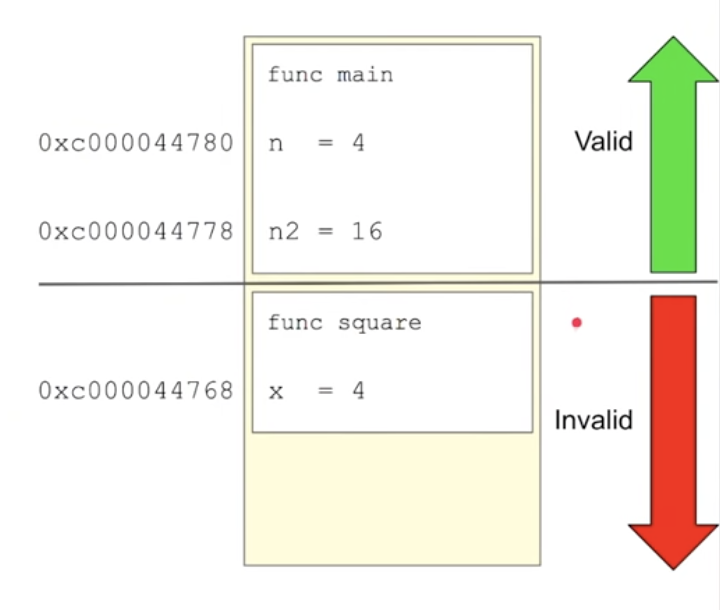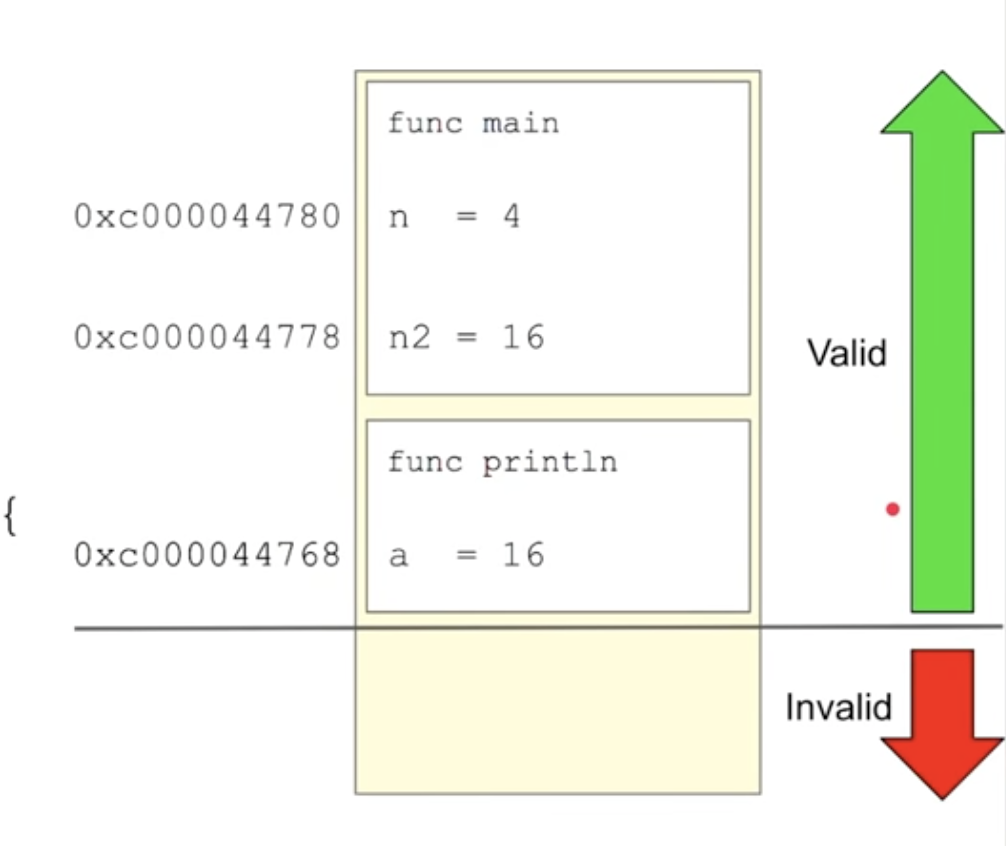Golang Memory Management: Stack vs Heap
Golang uses two types of memory: stack and heap.
Stack
- Each goroutine has its own stack initialized.
- Provides fast access and automatic cleaning.
Heap
- Anything on the heap is managed by the garbage collector (GC).
- GC is a concurrent mark-and-sweep algorithm, which might cause latency.
Memory Allocation: new vs make
new: Allocates a single memory block, returns a pointer to newly allocated zeroed memory. Used mostly for struct types.make: Used to create slices, maps, and channels, and allocates memory blocks.
Use Case 1: Stack Program Without Pointers
package main
func main() {
n := 4
n2 := square(n)
println(n2)
}
func square(n int) int {
return n * n
}
func println(_ int) {
}
There will be:
- Stack frame 1:
main - Stack frame 2:
square
Once the square calculation is done, Go does not clear the stack frame. The value of n is still part of the square stack frame. It tracks valid and invalid stack frames, marking the square frame as invalid.
Then, the println stack frame replaces the square stack frame, like a self-cleaning process.


Use Case 2: Stack Program with Pointers
package main
func main() {
n := 4
square(&n)
println(n)
}
func square(n *int) int {
return *n * *n
}
func println(_ int) {
}
Escape analysis output:
go build -gcflags="-m -l" test.go
# command-line-arguments
./test.go:9:13: n does not escape
In this case, two stack frames will be created:
- One for
main - One for
square
The square function has a pointer n which points to the main stack frame’s value of n. When using pointers, it stays on the stack itself. This is called “passing pointer down on function typically stays on the stack”.
Use Case 3: Returning Pointer
package main
func main() {
n := 4
n1 := square(&n)
println(*n1)
}
func square(x *int) *int {
y := *x * *x
return &y
}
func println(_ int) {
}
Escape analysis output:
go build -gcflags="-m -l" test.go
# command-line-arguments
./test.go:9:13: x does not escape
./test.go:10:2: moved to heap: y
When the square function returns a pointer, it returns a pointer from the square stack frame, which becomes invalid as per stack cleaning. Then how does println access n1? The Go compiler understands that y cannot be part of the stack frame once square returns, so y will be part of the heap. This is called “sharing up (returning pointer) typically escapes to heap.”
Deep Dive into Memory Allocation
Only the compiler knows whether memory will be on the heap or stack. Below are a few reasons why values are constructed on the heap instead of the stack:
- A value could be referenced after the function that created it returns.
- When the compiler determines the value size is too large to fit on the stack.
- When the compiler does not know the size during compile time.
Example: IO Reader Interface
This explains why the IO reader is written this way:
type Reader interface {
Read(b []byte) (n int, err error)
}
Instead of:
type Reader interface {
Read(n int) (b []byte, err error)
}
With the second approach, there would be many heap allocations, which would be inefficient.
References
Understanding Allocations: the Stack and the Heap - GopherCon SG 2019